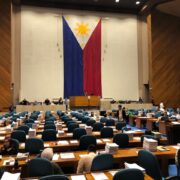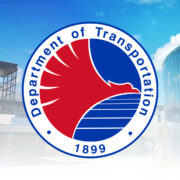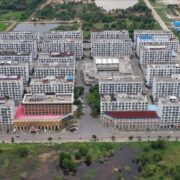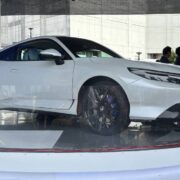‘Pede-strain’

The main roads in my subdivision in Las Piñas have been subjected to sidewalk-widening works for some months now. The road works are approaching our residence, but many residents, including me, have been expressing our reservations regarding this project by the local government.
While we do appreciate the effort to widen the sidewalks on both sides of the main roads, since in principle those wider sidewalks would provide pedestrians a safer and more enjoyable path to walk on, what we’re concerned about is what’s actually happening after the works are done.
The work here in our village is done in stages, with some stretches of road already completed a few months ago. What we have observed, with dismay, is that after the sidewalks are widened and paved, and the construction crews leave, the cars are then parked on the sidewalks (because the sidewalks are now wide enough to fit a car). This immediately defeats the purpose of the sidewalk widening. Now we see pedestrians forced to walk on the roads because so many cars are parked on the sidewalk.
And there are aggravating circumstances, too, especially when the nearby barangay hall holds events or meetings. Visitors and officials park their vehicles, trikes, motorcycles, and even e-trikes in front of residents’ gates and driveways, thereby blocking homeowners’ right of way in and out of their garages.
Parked vehicles on the sidewalks also create blind spots for motorists, especially when these vehicles are parked too near around corners and bends. On straightaways, parked vehicles on sidewalks also tend to make pedestrians about to cross the road invisible to oncoming traffic until the last split second, not giving ample time for motorists to react or slow down. Children and adults who aren’t taller than the parked vehicles are especially vulnerable. The dangers are increased at night, especially in unlit areas.
In short, because of the complete lack of parking enforcement along the main roads of our village, the newly paved and widened sidewalks have become mere open parking areas. It hasn’t added to the safety and enjoyment of pedestrians one bit.
Before this project started, when I heard of the local government’s plan to widen our village’s sidewalks, I was glad that I could finally enjoy my long walks around the village. I was so looking forward to walking along those wide sidewalks as part of my exercise routine, and enjoy viewing the houses along the way.
But now? I’m seething while I’m forced to walk on the road, cars and motorbikes whizzing by inches from me. I can literally feel the wind they displace as they speed on by. My inner road rager wants to deflate the tires of all these cars parked on the sidewalk.
But I can only let out a disappointed sigh. The public works department of the city dismantled the old (and narrow) sidewalks, along with the potted plants, shrubberies, and trees that the residents so painstakingly nurtured through the years (perhaps even decades), only to replace these with a drab, gray swath of concrete sidewalk which now doesn’t even serve its purpose. I’m pretty sure at least one law was violated here (Republic Act No. 3571—which expressly prohibits the cutting, destroying, or injuring of planted or growing trees, flowering plants and shrubs or plants of scenic value along public roads, in plazas, parks, school premises or in any other public pleasure ground—comes to mind).
Now, I’m not only forced to risk my life even more by walking on the road, but I’m made to suffer even more the heat island effect of having no greeneries on wider concreted spaces. Pity our senior citizens who stand to be more exposed to such effects when they do their daily walks in the village.
This is just one village, in a megalopolis surrounded by dozens of villages. Sadly, what I have seen here in my own village is the norm in many communities in and around Metro Manila. Rare are those that value wide sidewalks for what they truly should be, spaces exclusively for pedestrians. Sidewalks lined with greenery are even rarer, seen only in higher-end villages.
Why can’t pedestrian safety cut through such class barriers? Why is that, in Metro Manila where a staggering 88 percent of households do not own a car, it feels as though we’re being overrun by cars? Why is it that, in a country with 94 percent of its population reliant on walking and public transportation, sidewalks are the first to be “repurposed” or erased completely from the plans?
We are a nation of pedestrians. Yet, the physical landscape of our cities tells a different story. It is a landscape where 50% to 60% of the urban space is dedicated exclusively to roads for private vehicles. It is a system where public investment and infrastructure policy overwhelmingly favor the mobility of the car-owning minority over the safety and needs of the commuting majority.
Why are our cities built as if no one walks? Why are my village roads being redone like everyone here owns a car? Why are sidewalks, the most basic element of pedestrian infrastructure, treated not as an essential public good but as an optional feature, a contested afterthought on the margins of roads built for speed?
Maybe we’re just so used to seeing people walk on the roads that it’s not that big of a deal seeing people literally getting into harm’s way every time they set foot (or feet) onto busy roads—until it’s too late and the harm is actually done. Maybe I ought to invite my chauffeured lawmakers to my village and make them walk on our newly widened sidewalks—during the hottest time of the day.


















